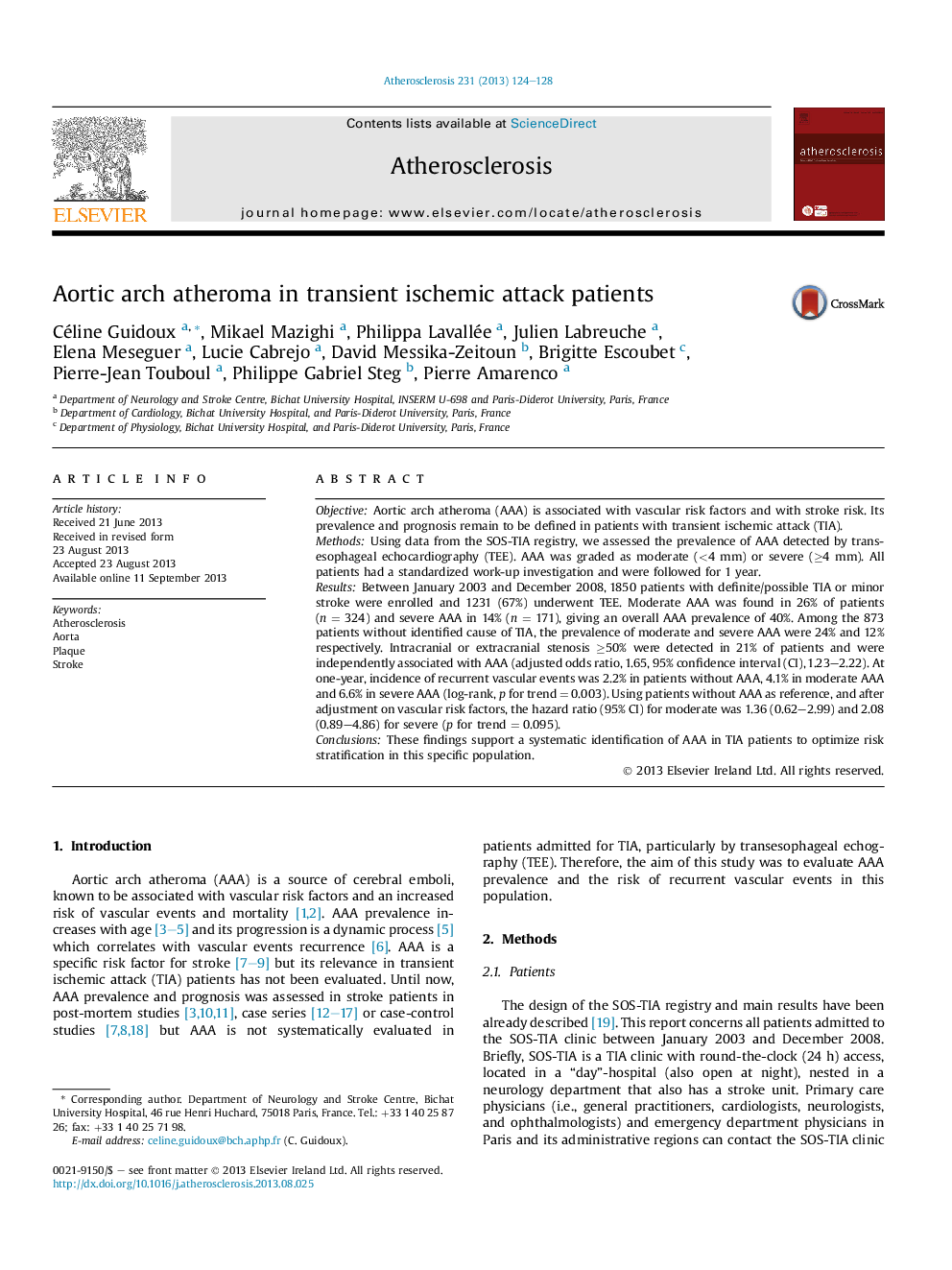| کد مقاله | کد نشریه | سال انتشار | مقاله انگلیسی | نسخه تمام متن |
|---|---|---|---|---|
| 5946982 | 1172363 | 2013 | 5 صفحه PDF | دانلود رایگان |
- We assessed the prevalence and prognosis of TIA patients with aortic arch atheroma.
- Aortic arch atheroma was found in 40% of TIA patients.
- Aortic arch atheroma was associated with intracranial and extracranial stenosis.
- A higher recurrent vascular risk was found in patients with aortic arch atheroma.
- Similar findings were found in patients without identified cause of TIA.
ObjectiveAortic arch atheroma (AAA) is associated with vascular risk factors and with stroke risk. Its prevalence and prognosis remain to be defined in patients with transient ischemic attack (TIA).MethodsUsing data from the SOS-TIA registry, we assessed the prevalence of AAA detected by transesophageal echocardiography (TEE). AAA was graded as moderate (<4 mm) or severe (â¥4 mm). All patients had a standardized work-up investigation and were followed for 1 year.ResultsBetween January 2003 and December 2008, 1850 patients with definite/possible TIA or minor stroke were enrolled and 1231 (67%) underwent TEE. Moderate AAA was found in 26% of patients (n = 324) and severe AAA in 14% (n = 171), giving an overall AAA prevalence of 40%. Among the 873 patients without identified cause of TIA, the prevalence of moderate and severe AAA were 24% and 12% respectively. Intracranial or extracranial stenosis â¥50% were detected in 21% of patients and were independently associated with AAA (adjusted odds ratio, 1.65, 95% confidence interval (CI), 1.23-2.22). At one-year, incidence of recurrent vascular events was 2.2% in patients without AAA, 4.1% in moderate AAA and 6.6% in severe AAA (log-rank, p for trend = 0.003). Using patients without AAA as reference, and after adjustment on vascular risk factors, the hazard ratio (95% CI) for moderate was 1.36 (0.62-2.99) and 2.08 (0.89-4.86) for severe (p for trend = 0.095).ConclusionsThese findings support a systematic identification of AAA in TIA patients to optimize risk stratification in this specific population.
Journal: Atherosclerosis - Volume 231, Issue 1, November 2013, Pages 124-128
